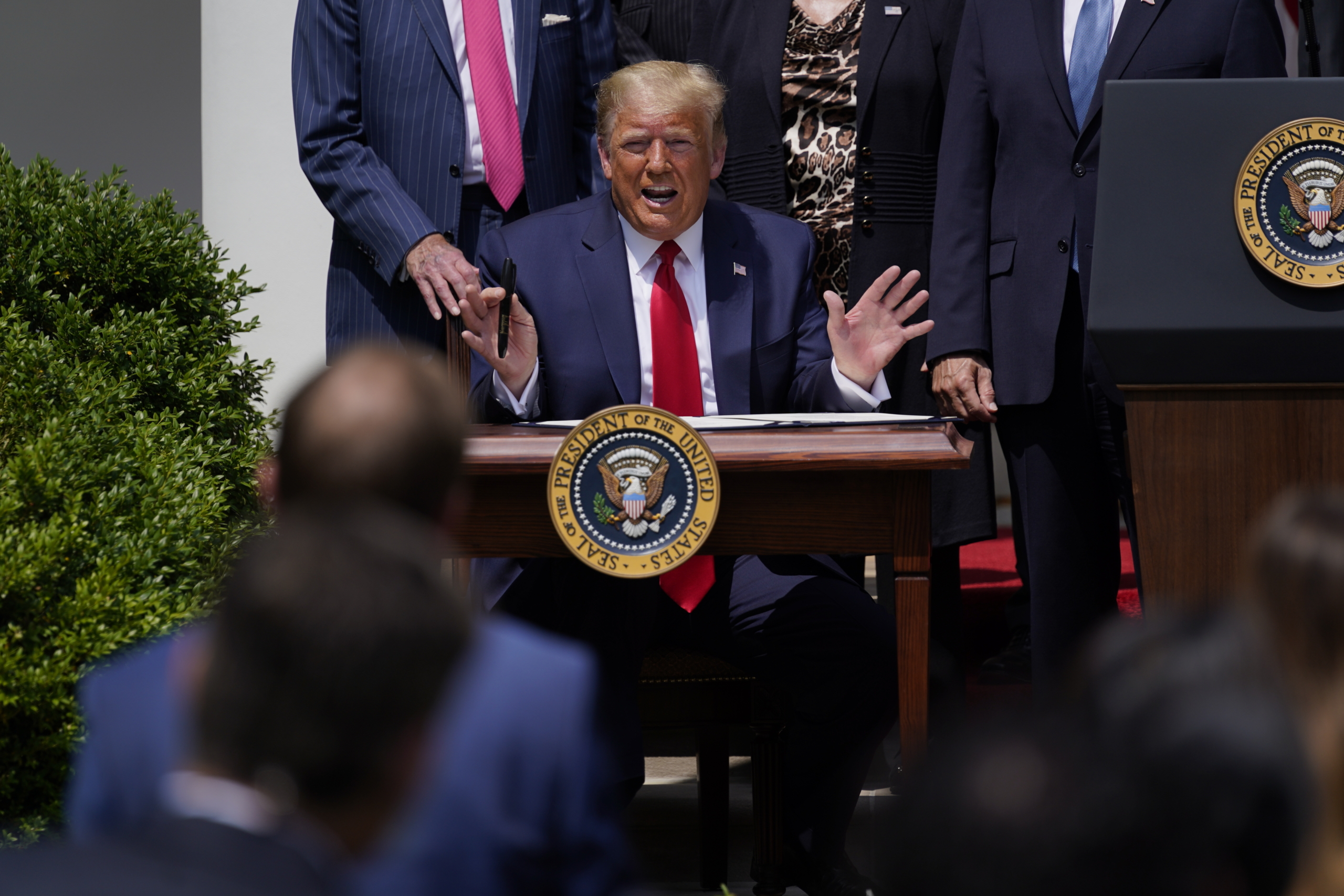Sign up for The Media Today, CJR’s daily newsletter.
President Trump’s Rose Garden event Friday, called ostensibly to tout surprisingly good job numbers, had most of the usual elements.
There was his usual distancing from the truth, on topics ranging from the covid-19 death toll to his self-acclaimed role in securing veterans’ benefits.
There was one of Trump’s usual insults, so often aimed at women or journalists of color, which came when PBS’s Yamiche Alcindor asked about stubbornly high jobless rates for Blacks and Latinos and he grumbled back: “You are something.”
There was his usual logorrhea, proclaiming that this was “a great day” for Minneapolis police victim George Floyd.
But there was also something new, some White House legerdemain that turned reporters into stand-ins for a piece of politicized stagecraft. Unfortunately, our press corps played along. It may have been grudging and unwitting. But it meant that they forfeited a chance to demonstrate our independence.
THE KICKER: Wesley Morris on four hundred years in one line of music
On the Rose Garden lawn, the chairs for reporters were originally set up for social distancing, maximizing their safety (even as outdoor transmission rates of covid-19 appear to be quite low). Apparently without notice to the press corps, White House aides then rearranged the chairs shortly before Trump began speaking, pushing them together with minimal distancing. A tweet showcasing CNN’s Khalil Abdallah’s before-and-after photos made clear how much had changed:
The news conference was initially set up for social distancing. Then the WH rearranged the chairs. Before and after pics from our @abdallahcnn pic.twitter.com/jxKAneAZsy
— Jim Acosta (@Acosta) June 5, 2020
Trump milked it: “You’re getting closer together, even you, I noticed,” he told reporters. “I noticed you’re starting to get much closer together. Looks much better.” And the move chimed nicely with his efforts to minimize measures—such as distancing or mask use—that epidemiologists say are critical to keep the pandemic under control.
Still, the reporters went along, and sat patiently for nearly an hour as Trump and his aides portrayed the unemployment news as a sign that the economy was about to turn around. Then the president walked off without taking questions (which explains why this should be called an “event” rather than a news conference).
ABC’s Jonathan Karl, who also heads the White House Correspondents’ Association, seemed to have been as surprised as anyone about the seating arrangement. After it ended, Karl tweeted out this statement from the group: “When we asked for an explanation, the White House press office told us the decision to move the chairs close together was made because ‘it looks better.’ ”
White House deputy press secretary Judd Deere said it was his decision and minimized the health risks: “I would remind you that those in the pool are tested—everyone is temperature-checked and asked if they have had symptoms,” he told CNN.
Karl later ripped the White House for putting “reporters at risk” and “turning the press corps into a prop.”
But you can be turned into a prop only if you allow it. After Trump is gone and historians try to figure out the role of the press in his ascent and reign, this incident will be remembered.
What was stopping White House reporters from moving the chairs six feet apart? What was preventing the press corps from refusing to sit so close to one another? Would the White House have revoked their credentials? Would the Secret Service have intervened?
Trump was going to speak Friday morning, regardless. After days of terrible news, he finally had something positive to report. So, to paraphrase the president, what did the press have to lose?
Mark Lukasiewicz, a former senior vice president at NBC News who is now dean of Hofstra University’s School of Communication, noted in an interview that White House reporters have hard jobs, particularly given their dependence on access to limited sources. But he also said they missed an opportunity.
“The White House press corps needs to understand that this White House isn’t playing by the old rules. That means you have to behave differently. What bothered me about Karl’s tweet was that it implied the press had no options. That’s not true. They had several options. They didn’t have to sit down.… They could turn around and leave.”
Journalists need to be especially aware of this, because we often point out when politicians use physical props, as Trump did with the Bible in front of St. John’s Church last week, or human props, as presidents since Reagan have done at their State of the Union addresses.
And here is what makes the press corps’s acquiescence to Trump’s stunt particularly painful: Just a few days before the event, a few blocks from the Rose Garden, a law enforcement officer slammed into an Australian reporter. Other journalists were gassed while covering the protests. A few days earlier, protesters chased and harassed a Fox News reporter in Lafayette Park. Around the country, journalists are being targeted as they try to report this story.
At some point, reporters must understand that Trump needs them even more than they need him. For all his cries (“Fake News!”) and slurs (“Enemy of the People!”), he pays close attention to the press, particularly those organizations, like CNN and the New York Times, that he sees as his antagonists.
Because when he stands on a podium and looks out at the press, the only thing that worries Donald J. Trump more than a distanced chair is an empty chair.
ICYMI: James Bennet and a moment of truth
Has America ever needed a media defender more than now? Help us by joining CJR today.



